Nippon Electric Company
Rising from Ashes, again...
Kunihiko Iwadare was born on the 15th of August in 1857 in the castle town of Kokura, Japan. He graduated from the Imperial College of Engineering in Tokyo and he subsequently briefly worked as a telegraph engineer for the Japanese government. Iwadare traveled to New York City in 1886 where he met Charles Batchelor. Batchelor was an inventor working with Thomas Alva Edison. Batchelor started working with Edison as a lab assistant, but the two quickly became business partners. This partnership became a legal structure as Batchelor was among the investors in the Edison Electric Light Company, Edison Lamp Company, Edison Machine Works, and the Edison General Electric Company. This last was a merger of other Edison companies, and later became the General Electric Company, which exists to this day, after acquiring Thomson-Houston with the support of Anthony Drexel and J. P. Morgan. Batchelor was the man responsible for recruiting Nikola Tesla to Edison’s employ, and he was the first executive of the General Electric Company serving as Treasurer and General Manager. In late 1886, Batchelor recruited Kunihiko Iwadare to work for Edison Machine Works. Initially, Iwadare was in Manhattan, but he transferred to Schenectady in January of 1887.
It is unclear exactly how long Iwadare worked for Edison. Different sources make different statements. I reached out to some researchers in Japan who’d done work on his early life, but I received no responses. At any rate, Iwadare returned to Japan with an intent to do his part in building an electrical industry in his homeland. He worked as an engineer for the Osaka Electric Lamp Company, and then left the company 1898. For a few months, he worked as a sales representative for both General Electric and Western Electric, but his relationship with Western was the more important of the two. When Western decided to establish a firm in Japan, Iwadare worked with Takeshiro Maeda and Walter Tenney Carleton to do so. On the 31st of August in 1898, this turned into a public joint venture known as the Nippon Electric Company, Ltd with Western Electric holding a fifty four percent stake and at which Iwadare was the managing director, Maeda oversaw sales, and Carleton oversaw the facilities that had been purchased from Miyoshi Electrical Manufacturing. The company purchased a second factory from Mitsui in 1900, and immediately began working to adapt it to its own needs. This was completed in December of 1902.
The most important of NEC’s earliest business was the import of telephones from the USA for the Japanese government and the build out of the Japanese telephone system under the direction of the Ministry of Communication. Rather quickly, NEC shifted from importing and assembling telephones to manufacturing their own telephones. Telegraph lines had already been strung across most of Japan by the time NEC was formed, and these were adapted for use with the new telephone system much like the rest of the industrial world. It was, however, Takeshiro Maeda, a former official of the Ministry of Communications, who suggested that NEC work on entering the consumer market. He regarded the government sales avenue as being limited, and he saw far greater potential in the broader consumer market. While NEC followed that advice, it was quite limited due to the Russo-Japanese war and the government’s contracts for telecommunications throughout Manchuria. This, in particular, led NEC to become similar to AT&T with a monopoly over the telephone system in Japan. NEC opened offices in Seoul in 1908, and in Port Arthur in 1909.
Maeda’s suggestions became quite important to NEC in 1913 as a recession hit Japan. They began importing household appliances, and by 1916, the country’s economy had recovered and NEC was stronger than it had ever been. Telephone network expansion began one again, but the consumer products continued as well.
In 1918, Western Electric’s ownership stake was transferred to International Western Electric. NEC ran new telephone lines of its own manufacture (rather than running lines made by others as they’d done before) thanks to an electrical cabling joint venture with Sumitomo formed in 1919. In 1923, four NEC factories were completely destroyed in an earthquake, but the company rebuilt quickly and began manufacturing radios and transmitters in 1924 in addition to all of their other products and services. IWE then sold their stake to International Telephone and Telegraph in 1925 perhaps as revenues were down due to reinvestment required to rebuild. Working with the Ministry of Communication, NEC produced the equipment needed by the Japan Broadcasting Corporation (Nippon Hōsō Kyōkai, or NHK) which began operation on the 6th of August in 1926. That same year, Iwadare became Chairman of the Board at NEC. 1927 saw the company produce and deliver its own switching systems, and 1928 saw the company develop its phototelegraphic equipment. NEC was thriving, expanding, and rapidly developing new technologies. In 1932, some amount of ITT’s stake in the company was sold to Sumitomo after which international efforts began again in earnest with NEC running one thousand nine hundred miles of telecommunications cables between Japan and China. In 1939, NEC opened its first formal research and development laboratory with the support of the government. By the end of the 1930s, NEC was producing televisions. All shares not held by NEC itself were transferred to Sumitomo in 1941. The company was then renamed Sumitomo Communication Industries for the duration of the war. In 1945, operations had effectively ceased due to the company’s recently rebuilt factories having been completely destroyed in the course of war. During Japan’s occupation by Allied forces following the close of hostilities, the Japanese zaibatsus were dissolved. Nippon Electric Company reemerged as an independent entity. The first of the company’s large manufacturing facilities returned to operation in January of 1946. By 1952, the company had mostly recovered and was awarded the Deming Prize for quality control.
A tiny bit about the logo here… many cite that this logo is from 1963. However, this logo was present on NEC Magazine covers published by the company itself as early as 1948. Before this, it would appear that the company’s products either went unbranded or were stamped with the full company name.
While the company was continuing development of radio communications, telephony, cabling, displays, household appliances, and other industries through the 1950s, the company had started research and development of transistors in 1950, and they had started research and development of computing technologies in 1954. NEC’s computing research was varied. Initially, the company focused on vacuum tubes, and they then switched to parametrons. However, the company’s early investment into transistor research paid off, and NEC completed the NEAC-1101 and 1102 in 1958 (partially transistorized but using parametrons as well). These were followed by the 2201 in September of 1958 which is notable for being made entirely of parts produced in Japan, being transistorized, relatively small, and relatively high performance for the time beating the IBM 650.
The NEC NEAC-2201 was built of two main pieces, a mainframe and a console with I/O. Aimed at the business market, this machine was built to fit in an office environment. It was about a meter deep, about a meter wide, and around one and two thirds meters tall. The machine was fixed point decimal with ten digits per word, and addressing was also decimal. Memory capacity was one thousand forty words on a Hokushin Electric magnetic drum memory unit. Compute was accomplished via six hundred germanium alloy transistors, seventy five hundred germanium diodes, and one hundred vacuum tubes. Input for this machine was accomplished via a photoelectric tape reader, and output via a tape punch typewriter. This computer had sixty three different instructions, and could complete addition or subtraction in 1.2ms, multiplication in 5.7ms, and division in 10.1ms. These figures presume that the data requested from memory was in the forty words of high performance outer drum. Otherwise, all three of those figures would increase by roughly 4ms. The 2201 was demonstrated at the AUTOMATH Exhibition in Paris in June of 1959 and was the first public demonstration of a fully operational, commercially available, transistor-based computer.
In May of 1959, NEC delivered the first NEAC-2203. This machine was similar to the 2201, but it replaced the one hundred tubes with transistors, and it changed the memory architecture. Words were now twelve digits. Memory was now hierarchical with three tiers. The fastest memory was two hundred forty words of core memory, two thousand words were of high-speed drum, and ten thousand words were of slower drum. The computer’s transistor count was increased to thirteen hundred thirty eight, and the diode count to seventeen thousand three forty three. The I/O system used another twelve hundred forty one transistors and fourteen thousand nine hundred twenty one diodes. The total instruction count was increased to eighty eight largely due to the introduction of floating point, and the time per operation was significantly reduced. Addition and subtraction now took just 0.24ms for fixed point and floating point was around 2ms. Multiplication was completed in roughly 2.5ms for fixed point or about 3.5ms for floating point, and division required 6ms for fixed point or around 7ms for floating point. This was a multitasking machine with an interrupt function, and it could run three programs at once via time sharing. Input and output were improved with magnetic tape running at around eight thousand digits per second, and a line printer capable of printing two hundred lines of ninety six characters per line every minute. Befitting a computer of this era, card punchers and readers were available as were paper tape readers and punchers.
NEC was always working on what was yet to come, and they began researching integrated circuit technologies in 1960. With the computer business doing well and with the company’s computer R&D working on ICs, NEC began working with Honeywell in 1962 to try and compete directly with IBM on the low-end of the market. The fruit of this partnership was a cheaper NEAC-2200 based on the Honeywell H200. This was a very successful move and led to a US marketing subsidiary being established in 1963, and factories being opened in Mexico and Brazil in 1968.
On all of the early NEC computers, some software referred to as standard routines from which further software could be built were provided with the computers. These routines included an initial program loader, a symbolic input processor (a single pass assembler), a two pass assembler with output to paper tape, a compiler for scientific computation used with further routines for that purpose (functions, matrices, statistics), magnetic tape handling, and some utility routines.
Of course, NEC’s other endeavors were still on-going, and they were still on a scale that is hard to understand in totality. The company supplied the cable systems for trans-Pacific communications in 1964, satellite communication equipment for Comsat Corporation in 1971, and for Switzerland and China in 1972. The company supplied an automated broadcasting system to Japan Broadcasting in 1973, which happens to be the same year that the company debuted on the Amsterdam Stock Exchange. In 1964, Kobayashi Koji became NEC’s president. His first major move was to attempt to make NEC less reliant on government contracts, and to focus more heavily on computing.
The Honeywell partnership ended in 1962, but NEC’s computing ambitions most certainly did not. No longer content merely with business computing equipment, NEC aimed to produce larger mainframes for scientific, defense, and industrial concerns. These were the ACOS Series 77 machines made in partnership with Toshiba. ACOS stood for Advanced Comprehensive Operating System. These machines utilized LSI in memory and logic, and memory was comprised of eighteen pin, N-channel MOS of 1K each allowing up to 4K RAM. These machines also made use of firmware via 1K PROM. These machines featured hardware abstraction, memory segmentation, exception handling, and interprocess communication.
In 1977, the NEC Himawari meteorological satellite was launched by the Japanese space agency. The following year, NEC opened a manufacturing plant in Dallas, and purchased a chip fab in California.
On the 3rd of August in 1976, NEC launched the TK-80 (Training Kit μCOM80), which marked NEC’s entry in the microcomputer market. It was built around the μPD8080A (an Intel 8080 clone) clocked at 2MHz, 512B of RAM, 768B of ROM, and the most rudimentary of inputs and outputs. The machine is visually reminiscent of the Commodore KIM-1 though it shared nothing else in common. The TK-80 was a single PCB with eight seven-segment VFDs, twenty-five keys, and a card edge connector. With expansions, the board could be given a cassette drive, television output, and a full keyboard. It did sell somewhat well, and this earned it several later revisions and clones.
On the 9th of May in 1979, NEC announced the PC-8001, and the machine went on sale on the 28th of September in 1979. This machine housed the computer inside the keyboard like many later machines of 1980s, and it was sold pre-assembled. The 8001 was built around a clone of the Zilog Z80 clocked at 4MHz, the NEC μPD780C-1, featured 16K RAM, and 24K ROM. Importantly for the Japanese market, the character ROM included both Latin and Katakana. In the North American market, Katakana was replaced with Greek. As for ports, the 8001 included CRT video out, cassette, parallel, serial, and an expansion bus. On the software side of things, the 8001 included a BASIC variant, and DISK BASIC could be purchased separately for those wishing to use an external floppy disk drive. This machine was capable of eight by twenty five characters with two attributes per character and up to twenty attributes per line selected from: blinking, highlight, reverse, secret, vertical line, over line, underline, and color. This allows for a limited sort of graphic display treating a character as a two by four matrix allowing for 160x100, 8 color, pseudo-graphics. Audio was limited to an internal beeper.
The PC-8001 could be expanded via the PC-8012 I/O unit. Among all of the addons produced, the PCG8100 was the most common, and some games made for the computer were labelled as PCG-8100 Games. The PCG-8100 allowed for the creation of arbitrary eight by eight pixel patterns, and provided one or three audio channels depending upon the variant purchased. The other common expansion was an upgrade to 32K of RAM, and quite a bit of software required this upgrade. Later revisions of the computer shipped with 32K as standard. With the disk drive, CP/M could be used with the PC-8001. The NEC PC-8001 was the most successful of computer of 1979 through 1983 (it ceased production in January) within Japan.
In November of 1981, NEC released the PC-8801. While this machine was intended to be a business focused machine, it did find its way into households as well. This was the direct successor the 8801. This was built around the μPD780C-1 like its predecessor, but it shipped with 64K RAM, 48K ROM with Kanji support, retained the internal beeper and BASIC, but it changed the form factor. The PC-8801 moved the keyboard off of the chassis and then added four internal expansion slots.
Despite hardware similarities, the PC-8801 was not compatible with the PC-8001. The 8801 and its successors were quite successful. In particular, the PC-8801mkIISR, and its cost reduced version the PC-8801mkIIFR, sold well and helped the series remain popular in Japan until the 1990s. These later revisions featured upgraded sound and video capabilities. In the gaming market, the PC-8801 and its kin were a force with titles from Enix, Square, Sega, Hudson Soft, and many more having been available.
Along-side the 8801 series, NEC launched the PC-6000 series which was intended to occupy the low-end of the market. This machine was the most similar to the PC-8001, though it had a lower screen resolution, and it came with the AY-3-8910 sound chip as opposed to the simple beeper in the 8001 and first 8801. Otherwise, it used the same Z80 compatible processor, 16K RAM that could be expanded to 32K, and a similar form factor to the 8001 though it used a chiclet keyboard. Beyond the sound chip, the 6001 also had some connectors that weren’t present on other machines: two joystick ports, RF and RCA video outputs, a cassette drive and printer that didn’t require expansion boxes, and a cartridge slot. The cartridge slot, in particular, was great. It allowed not only RAM/ROM carts, but it could be used to add floppy disk support, or using an expansion box, two slots could be added to the computer. On the video front, the 6001 was a bit of an oddity. While having a lower screen resolution, it had true graphics modes. In mode one, the computer was text with thirty two columns and sixteen rows. In mode two, it was text-based-semigraphical similar to the 8001 and had nine colors. In mode three, the screen was one hundred twenty eight by one hundred ninety two with four colors, and in mode four the machine was two hundred fifty six by one hundred ninety two and two colors. With all of these differences, it becomes clear that the 6001 was designed as games machine, and would have been at home among Commodore, Atari, and Sinclair machines. The PC-6001 wasn’t as successful as NEC’s other machines, but it did get software support none the less.
On the 13th of October in 1982, NEC’s PC-9801 was brought to market. This was NEC’s high-end machine and it was 16bit. The computer was built around the Intel 8086 compatible NEC µPD8086 clocked at 5MHz and two µPD7220 graphics chips clocked at 2.5MHz. These graphics chips were developed with the intention to provide clear and efficient display of kanji, and in the PC-98 series one was used for graphics display and the other for text. The machine shipped with 128K RAM, 8K text VRAM, 96K graphics VRAM, 96K ROM, and an internal beeper. While it didn’t come with any standard storage, it did have five internal expansion slots, and one extra ROM slot. The PC-9801 could use PC-8801 peripherals unlike the 6001, and it was moderately compatible with N88-BASIC from the 8801 (some small changes were needed). Being intended for the high-end of the market, the price matched. The PC-9801 with a PC-9881 eight inch disk drive, a PC-9801-01 expansion, and a printer ran about ¥1 million (or about $9300 in 2024 dollars). The screen modes here were substantially improved over many contemporaries:
640x200, two colors, six pages
640x200, eight colors, two pages
640x400, two colors, three pages
640x400, eight colors, one page
As result, while the PC-98 series of machines wasn’t initially intended for gaming, it was certainly heavily used for the purpose.
In one of, perhaps, the most visionary moves by NEC, the PC-98 series of computers gained official support for MS-DOS. This combined with excellent support for the Japanese language made PC-98 the dominant force in Japanese microcomputers between October of 1982 and the end of the 1990s. The language support is a seriously big deal. Memory was expensive in the 1980s, and storing thousands of characters, processing them, and displaying them on-screen clearly and quickly was difficult. As the PC-9801 was the first machine to be capable of this at a price anyone could reasonably afford, it gained market share quickly.
Outside of Japan, NEC released a machine that was similar to the PC-98 series but that had a different form factor and lower vertical screen resolution. These were the NEC APC systems. They ran either CP/M-86 or MS-DOS, integrated the system into the display along with dual eight inch floppy disk drives, and had a separate keyboard. While interesting machines, they weren’t particularly successful.
There were a ton of SKUs in the PC-98 series, I will briefly cover the machines I believe to be the most notable, but please do understand that there were many more than what I will list here. The PC-9801 F1 provided a CPU compatible with the 8086-2 and added a five and a quarter inch floppy disk drive as standard. The F3 added a 10MB HDD as standard. The U2 moved the series to the NEC V30 CPU. The NEC V30 (and the V20 which was the 8088 equivalent) are among my favorite CPUs ever produced. The V30 was both object code and pin compatible with the Intel 8086 while being ten to thirty percent faster depending upon the given operation. It had a dual internal 16bit databus, faster address calculation, faster integer multiplication, and included a Z80 emulation mode allowing it to execute all of the original Z80 instructions. Additionally, the V30 included 80186 instruction support. These CPUs were sold as retail products on their own, while NEC also licensed the designs to other manufacturers. With the NEC PC-9801 VX4, a purchaser could get a machine with a V30 clocked 10MHz, 384K RAM, a 20MB HDD, and two five and a quarter floppy disk drives for ¥830000. The PC-9801 VX0 was released in November of 1986 for ¥353K and featured an 80286 clocked at 8MHz along with a V30 clocked at 10MHz and feature 640K RAM. More expensive models were available at the time that further added hard disks and floppy disk drives for more money. Similar machines were made with both 386 CPUs and V30s at higher clock speeds and with more RAM. This ceased in 1990. From then on, NEC made machines at different price points depending upon the CPU, RAM, and storage configuration but they didn’t feature multiple CPUs. The first 486 machines from NEC were released in January of 1992. These were clocked at 16MHz and shipped with 1.6MB of RAM. The SKUs were priced and differentiated by storage configuration offering up to a 100MB HDD and dual three and half inch floppy disk drives. The first Pentium models were released in September of 1995. By this time, pricing had fallen substantially to just ¥98K and RAM had risen to 2MB. Both three and half inch floppy disk drives and PCM sound were standard. Over the lifetime of these machines, NEC gained and held around two thirds of the computer market in Japan.
For 1989, NEC’s revenues reached $21.3 billion, and NEC’s dominance in the market was only truly threatened when Compaq entered the market along with Dell, and further, the rise of these IBM-compatibles allowed other Japanese manufacturers like Fujitsu to compete on more even ground. In 1990, IBM Japan released DOS/V which brought Japanese language support to the IBM PC/AT provided the machine had a VGA card. Using DOS/V and a VGA adapter, Compaq began releasing such machines immediately, and Dell followed the following year. The primary problem for NEC was the Compaq’s machines started at just ¥128K compared to NEC’s entry-level pricing of ¥248K. The last PC-9801 successor system was the 98MATE PC-9821 Ra43 which featured an Intel Celeron clocked at 433MHz announced in May of 2000, released in June of 2000, and last orders accepted in August of 2003. This machine was compatible with MS-DOS 6.2, Windows 3.1, Windows 98, Windows 2000, OS/2, NT, and NetWare. At the same time the this last PC-98 system was announced, NEC also announced the PC98-NX series which was more of an IBM-compatible and not a DOS/V compatible system. By 1997, NEC’s market share that had once stood at nearly eighty percent had dropped to around thirty five percent.
NEC introduced the IBM-compatible PowerMate series to Europe in 1991. This built on an R&D relationship that NEC had had with Bull and Honeywell, and NEC doubled down with a $64 million investment in Bull in 1993, and further smaller investments that eventually resulted in in NEC owning roughly seventeen percent of Bull by 1996. With a similar tactic, NEC invested in Packard Bell, and acquired Zenith Data Systems form Bull. All of these arrangements led to NEC merging their PC business (outside of Japan, China, and Korea) with Packard Bell to create Packard Bell NEC Inc. NEC’s PC-98 was never truly successful outside East Asia, and the company’s IBM-compatibles were never as popular as some of their competitors’. The race to the bottom in pricing during the 1990s apparently spared no one and forced these kinds of mergers as we’ve seen with other PC makers.
NEC’s larger computer systems continued to develop as well. In February of 1985, NEC announced the ACOS System 1500. At the time of its introduction, the S1540 was the fastest general purpose (and non-supercomputer) computer on the planet. It used many advanced technologies that are still in use today such as level 2 cache, pipelining, symmetric multiprocessing, and high precision branch prediction. The same year, NEC released the SX vector supercomputer series. The SX-1 and SX-2 had been announced in April of 1983. The SX-1 and SX-1E were the more affordable and lower end models while the SX-2 was the high end. The SX-2 was also the first computer to exceed one billion floating point operations per second with maximum vector operation performance of about 1.3GFLOPS. The system’s total cache was 64K and main system memory was 256MB. It had thirty two I/O channels achieving a data transfer speed of 50MB/s. The SX line of supercomputers continued with the SX-3/44 claiming the performance crown for 1992 and 1993. The Earth Simulator supercomputer was a cluster of six hundred forty NEC SX-6 nodes with eight vector processors and sixteen gigabytes of RAM per node yielding five thousand twenty processors and ten terabytes of memory. This computer was the fastest super computer on the planet from 2002 to 2004. Its primary use, as the name would imply, was to run climate models and Earth geophysics simulations and calculations for the Japan Aerospace Exploration Agency, the Japan Atomic Energy Research institute, and the Japan Marine Science and Technology Center. This was followed by a second Earth Simulator built on the SX-9 platform. While ES2 wasn’t the performance champ at turn on in 2009, it was the most efficient supercomputer in a performance per watt sense when it was introduced. The third Earth Simulator, which went active in 2015 and was decommissioned in 2021, was built on the NEC SX-ACE platform. ES4, which went online in 2021, uses AMD EPYC CPUs with SX-Aurora TSUBASA vector engines along with NVIDIA Ampere A100 GPUs. The most recent SX system successor as of this writing is the NEC SX-Aurora TSUBASA A511-64. This system can have eight vector hosts with sixty four engines per host. Each vector engine is capable of 155.52 TFLOPS and has a memory bandwidth of 86.4TB/s. These vector engines are coupled with two Intel XEON Scalable Processors per host, 192GB of RAM per host, and an InfiniBand interconnect between each host. NEC recommends and supports Red Hat Enterprise Linux on the A511-64. On the software front, SX-1 and SX-2 ran ACOS-4. The SX-3 systems and later ran SUPER-UX until the SX-Aurora series.
Throughout the 1980s and 1990s, NEC continued to deliver VCRs, televisions, computer monitors, switching systems, and AV equipment. They also entered the video game market with the PC-Engine (TurboGrafx-16 in North America) on the 30th of October in 1987. The machine was developed in a joint venture with HudsonSoft and used an 8bit HuC6280A which was 6502 compatible and clocked at 7.6MHz. The chip was capable of around 3.3MIPS. For graphics, the PC-Engine made use of the HuC6270A (video display controller) and the HuC6260 (video color encoder) and could produce five hundred twelve colors with four hundred eighty two on screen with sixty four sprites. It had a maximum screen resolution of five hundred twelve by two hundred forty two, and it offered RF and composite output. For sound, the HuC6280A pulled double duty, and offered six-channel wavetable at 3.58MHz. The machine had 8K RAM and 64K VRAM. Games came on HuCards which held 2.5MB and offered 2K for saves. The PC-Engine was successful with five hundred thousand units sold in the first month, and it was the best selling console in Japan in 1988. Despite being a physically diminutive system with an 8bit CPU, the graphics of the PC-Engine are more reminiscent of 2D titles on later 32bit systems. Within Japan, it was more popular than the Sega Mega Drive, but it was ultimately unseated by the Super Famicom. It wasn’t as successful outside of Japan. Its sucessors, the PC-Engine SuperGrafx and the PC-FX, failed in the market. In the wake of the PC-Engine, NEC supplied Nintendo with the V810 for the Virtual Boy, the VR4300 for the Nintendo64, SNK arcade machines, and the Hyper Neo Geo 64. They provided the PowerVR2 GPU to SEGA for the Dreamcast, and they manufactured the WonderSwan for Bandai. In Nintendo’s GameCube, one can find NEC DRAM and a GPU manufactured by but not designed by NEC.
NEC had continued to produce displays over the years and had a joint venture with Samsung to make OLEDs. That joint venture was formed in 2000, but NEC pulled out in 2004. They sold their entire display business along with all of their display patents to Samsung.
In 1999, NEC and Hitachi merged their DRAM businesses into a company known as Elpida Memory. In November of 2002, NEC split its semiconductor business off into NEC Electronics. Elpida took over Mitsubishi’s DRAM business in 2003. In April of 2010, NEC Electronics merged with Renesas Technology which was itself a joint venture of Hitachi and Mitsubishi. On the 3rd of April in 2010, Kingston took a position in Elpida as the company was suffering from lingering effects of the financial crisis, but this was insufficient. The company filed for bankruptcy in 2012, and was purchased by Micron in 2013. Today, NEC’s semiconductor legacy lives in Renesas and Micron Memory Japan.
In an attempt to raise funds, the company took some subsidiaries public, such as NEC Soft (software), NEC Machinery Corporation (industrial automation), NEC Mobiling (mobile phones and wireless communications), and NEC Fielding (computer maintenance services). NEC Electronics mentioned previously was also one of these. NEC Personal Computers was also spun off, and in 2011 merged into a joint venture with Lenovo Japan to form Lenovo NEC Holdings. Lenovo fully acquired this joint venture in July of 2016.
In 2007, the company formed a joint venture with Nissan, Automotive Energy Supply Corporation, to produce lithium batteries for automobiles. Production of the company’s lithium manganese oxide cells began in 2009, and the Nissan Leaf was released in 2010 using batteries built of those cells. Both Nissan and NEC later sold their portions of the company to Envision Group including their oversees manufacturing plants in Tennessee and Sunderland.
All of this may sound grim, but NEC was far from dead. While selling their lighting business in 2019, and selling NEC Display to Sharp in 2020, NEC is still a supplier of cloud and managed technology services, servers, supercomputers, telecommunications equipment, digital banking services, and municipal and governmental IT services. The company also still partners with governments on research and development, and NEC is the largest AI surveillance technology supplier on Earth outside of China. NEC’s leading technologies in that last arena are in facial recognition, databases of biometric data, and the hardware that enable these technologies. They got a relatively early start in this type of surveillance in 2013.
NEC’s history is long and fascinating. I cannot really do it justice. Partially, there is so much of it considering the size of the company and the company’s age. It’s also more difficult to research as I neither speak nor read Japanese. The company is comparable to both IBM and AT&T in the USA, but it was also something like Motorola with cell phones and the introduction of 3G networking, and something like Zilog or AMD with the V20 and V30 CPUs. Then, NEC also has a bit of the flavor of Atari in their games business, and then a little bit like Cray with their supercomputers. NEC’s contributions to the world have been many, and like every company I cover, I cannot help but be a fan. My own exposure to NEC (outside of unknowingly having used their hardware in the Nintendo64, GameCube, and Dreamcast) was limited to the V20, the V30, and the TurboGrafx-16, but as noted, the V20 and V30 are my favorite CPUs.
I have readers from many of the companies whose history I cover, and many of you were present for time periods I cover. A few of you are mentioned by name in my articles. All corrections to the record are welcome; feel free to leave a comment.



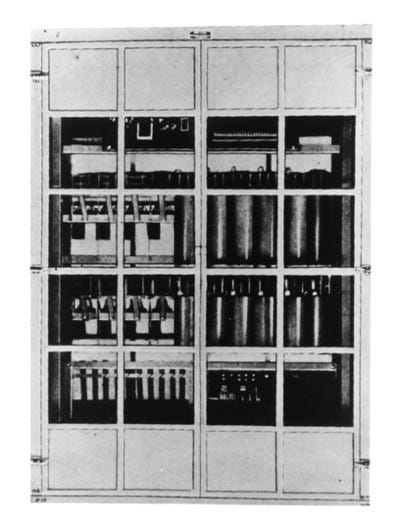




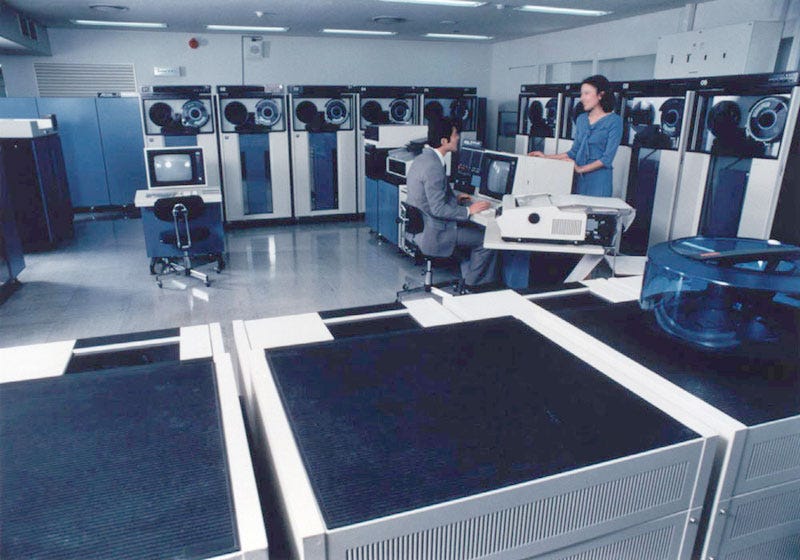
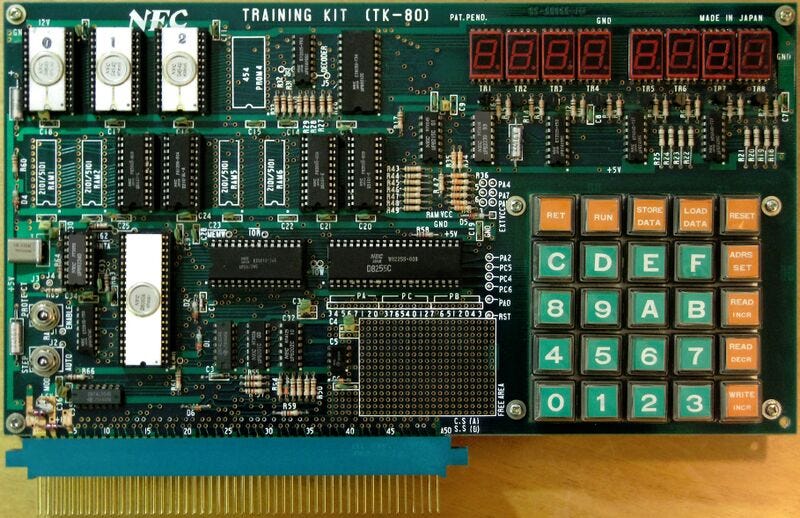


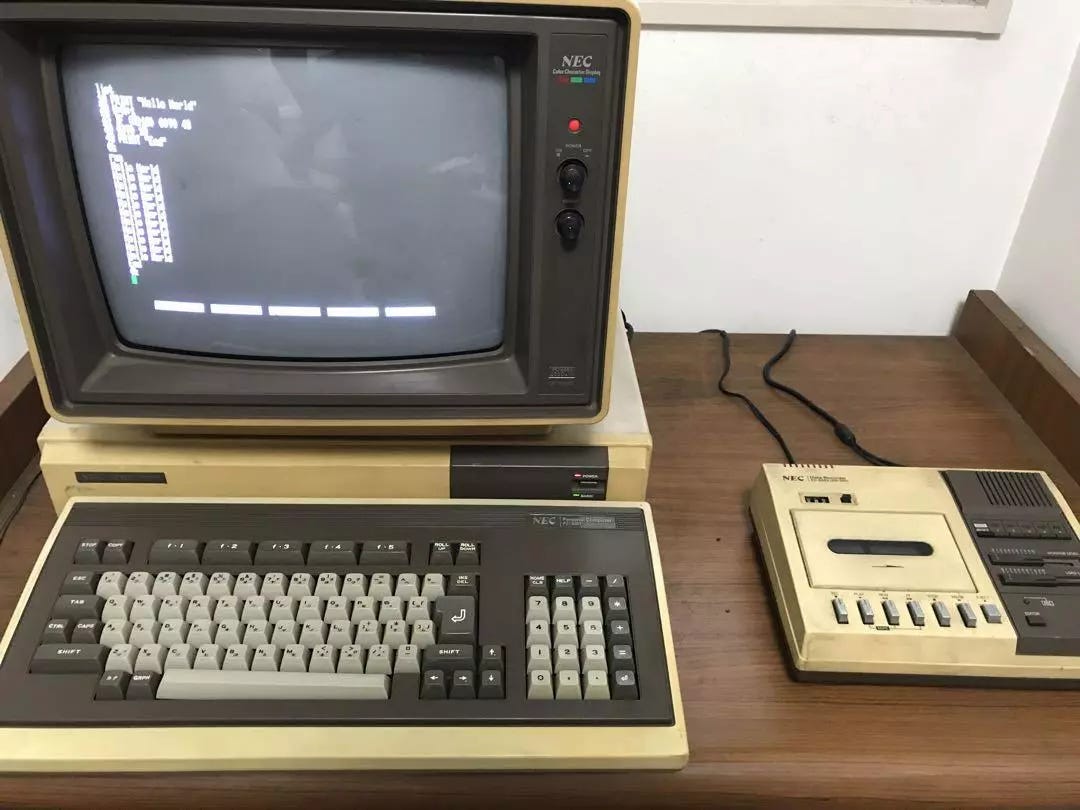




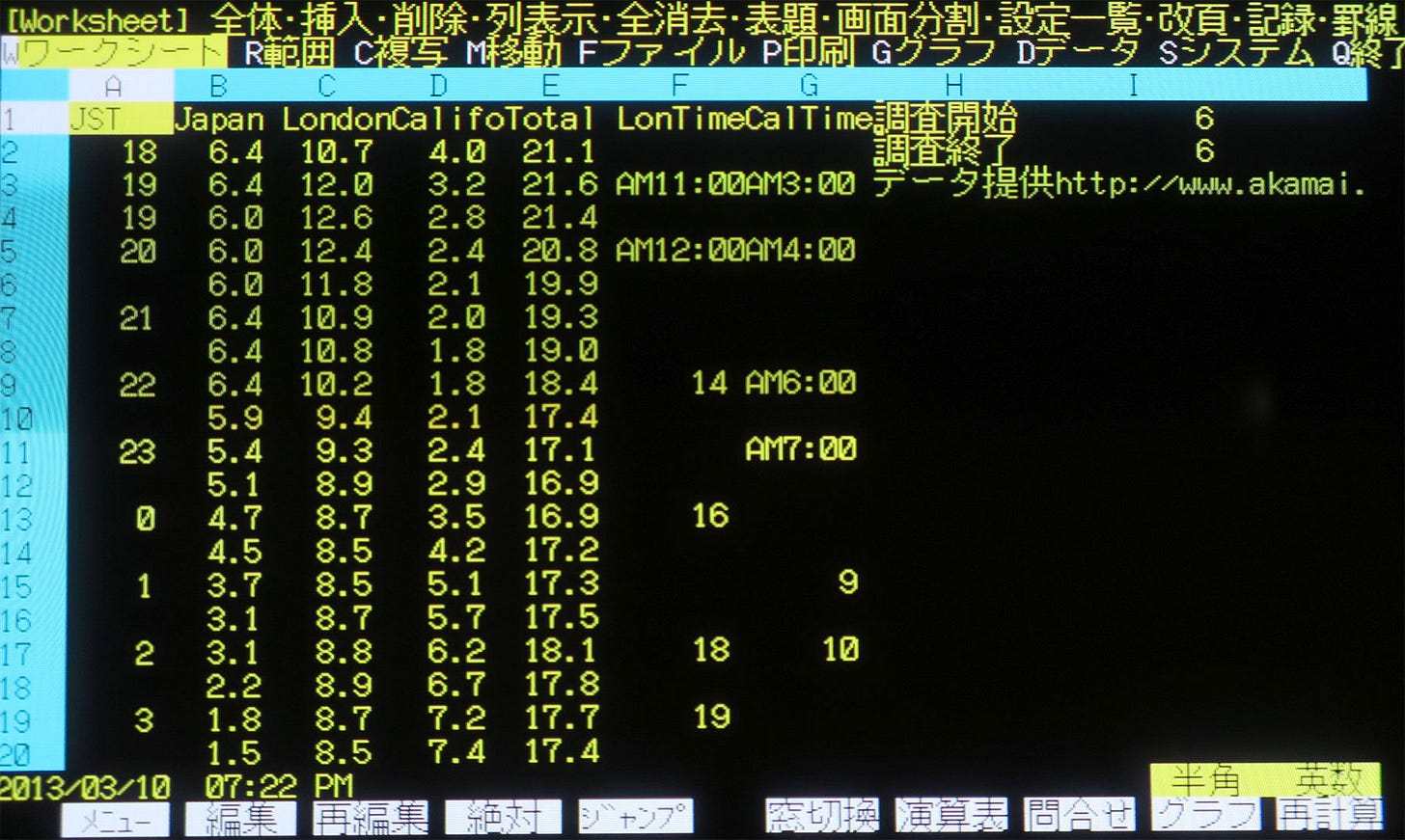

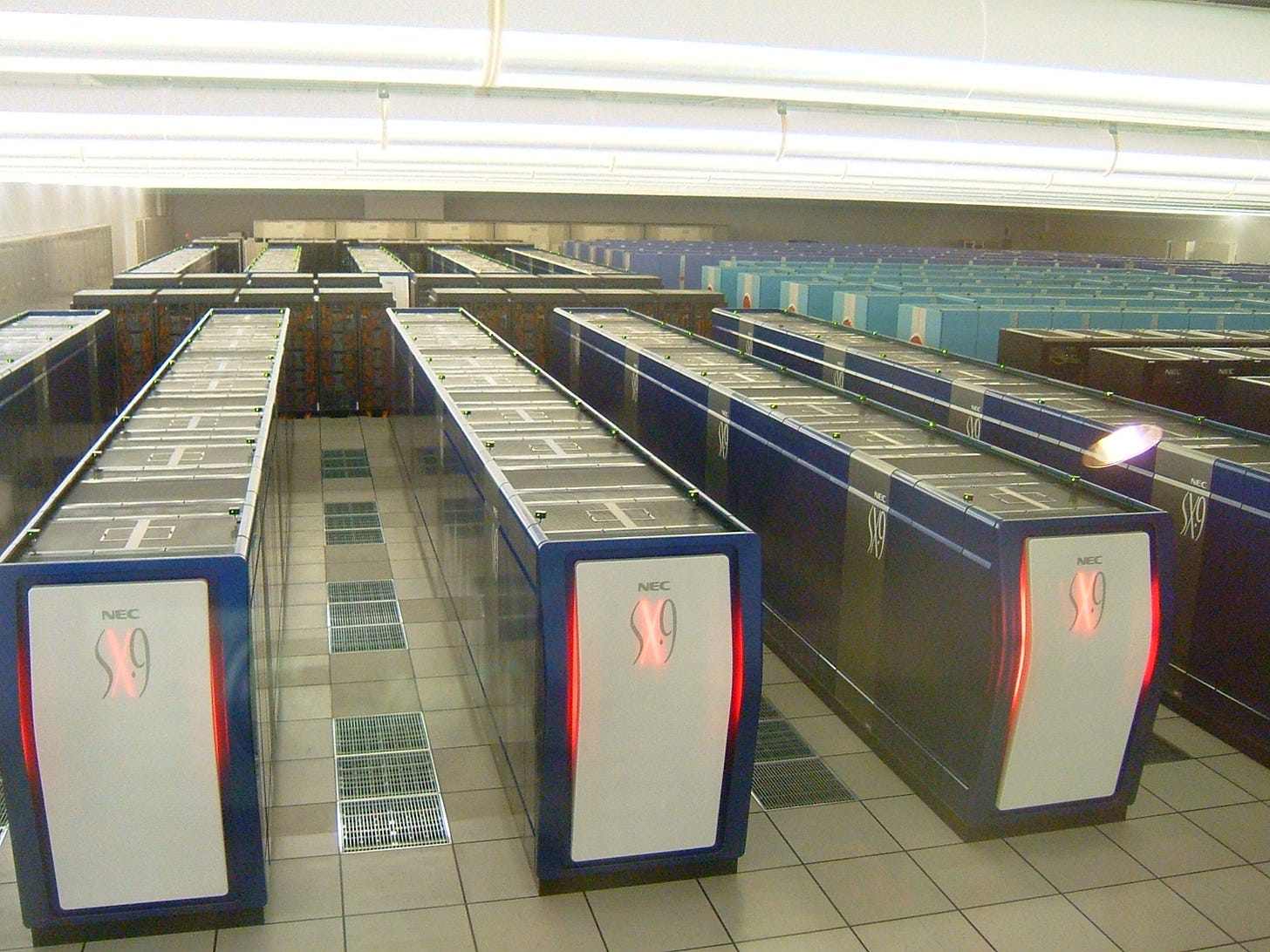




Quick notice: there is significant disagreement about the 2201 being the first fully-operation, transistorized computer to be publicly demonstrated. Of note, TRADIC from Bell was demonstrated to the public on the 16th of September in 1956 at the Institute of Radio Engineers Convention in New York City. The TRADIC, as far as I can tell, was absolutely the first fully transistorized computer, and it was publicly demonstrated in a fully working state. The sources for my statement about the 2201 made this claim, and I passed it on. I believe that the correct statement here would be that the 2201 was the first commercially available, fully transistorized, fully operational computer to have been demonstrated to the public as opposed to a single customer, governmental organization, or similar body. This is a much narrower achievement, but it is still quite notable. TRADIC was built by Bell for the USAF and was not a generally available commercial product. I wouldn't exactly refer to the 2201 as having been mass produced, but there was more than one 2201 while there was precisely one TRADIC. This notice will make into a house keeping update, and the article itself will be amended.
Great article, as they all are! Two comments: (1) Typo: "acquired Zenith Data Systems form Bull", and (2) some numbers are written out but would be more easily read if shown as numeric (e.g., "the diode count to seventeen thousand three forty three" --> "the diode count to 17,343").